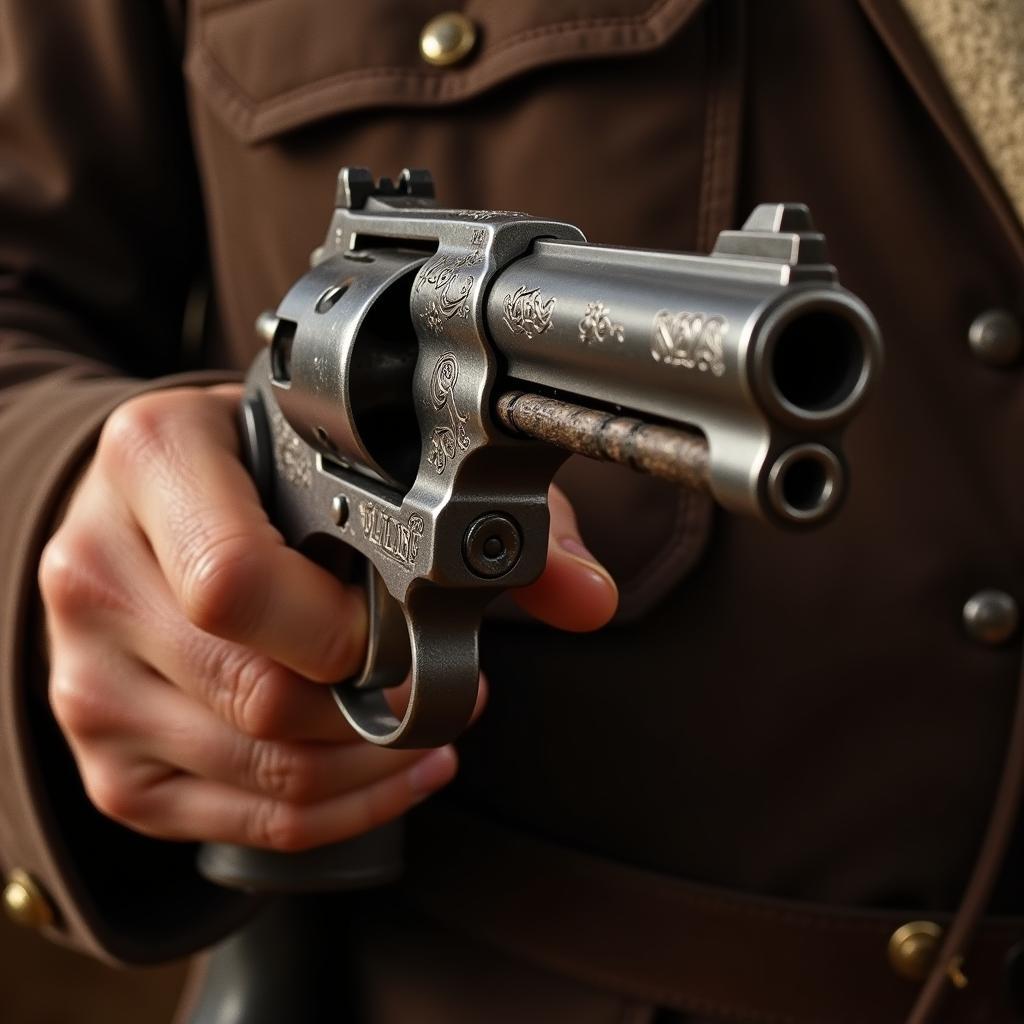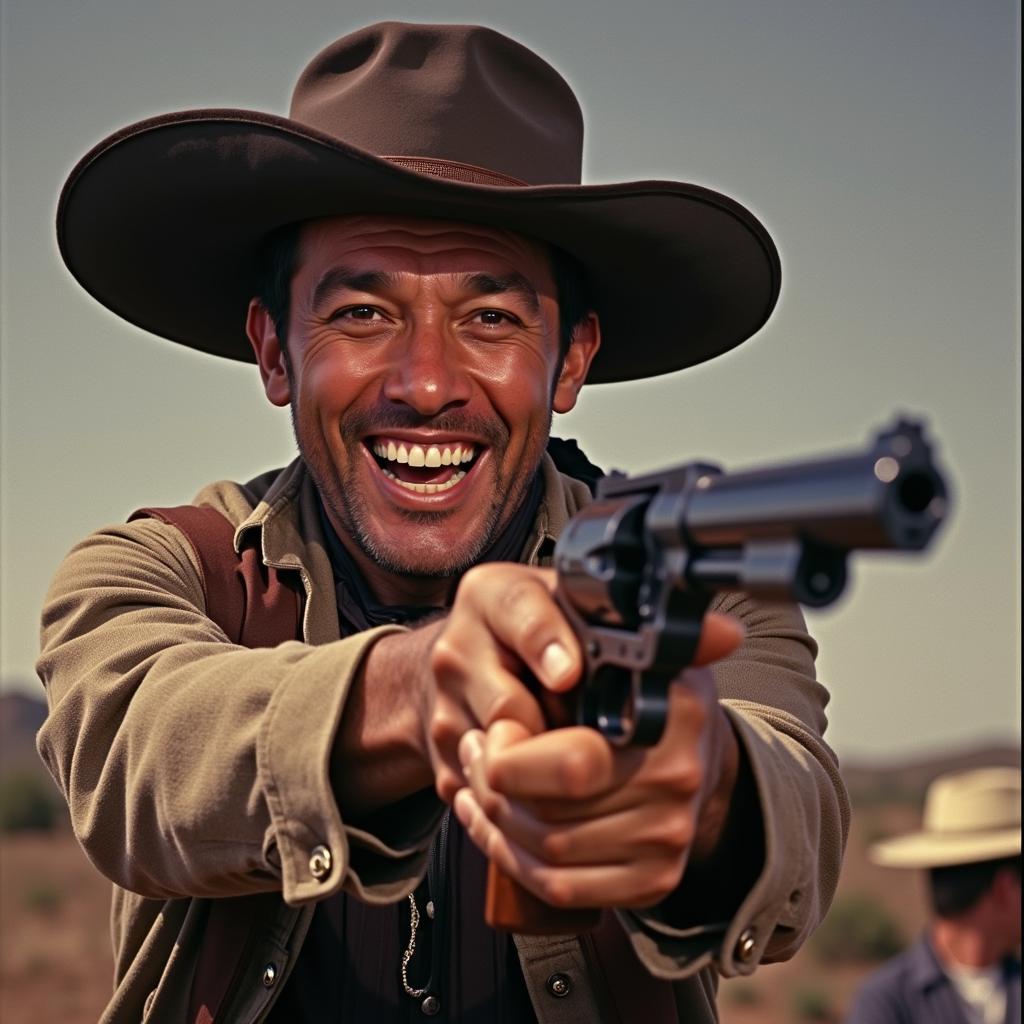The Good, the Bad and the Ugly, a spaghetti western masterpiece directed by Sergio Leone, is not just a landmark film for its cinematography, characters, and epic scope, but also for its iconic portrayal of firearms. From the iconic opening standoff to the climactic three-way duel, guns in The Good, the Bad and the Ugly are more than just tools of violence, they are extensions of the characters, symbols of power, and integral elements of the film’s narrative tapestry.
 Clint Eastwood as "Blondie" holding his Colt Navy revolver
Clint Eastwood as "Blondie" holding his Colt Navy revolver
The Gunslingers and Their Tools of the Trade
Each protagonist in the film is defined by their chosen weapon, reflecting their personalities and approaches to the brutal world they inhabit. Clint Eastwood, the enigmatic “Blondie,” favors the reliable and deadly Colt Navy 1851 revolver, renowned for its accuracy and quick reload. This choice reflects Blondie’s calm demeanor, calculated approach, and unwavering precision as a bounty hunter.
Tuco, the volatile and opportunistic bandit, prefers the more powerful but less accurate Remington 1858 New Army revolver. His choice mirrors his chaotic nature, relying more on brute force and intimidation than calculated strategy.
 Eli Wallach as "Tuco" brandishing his Remington 1858 revolver
Eli Wallach as "Tuco" brandishing his Remington 1858 revolver
Finally, “Angel Eyes,” the ruthless and methodical mercenary, utilizes a custom-engraved LeMat revolver, a unique and deadly weapon with a secondary shotgun barrel. This choice underscores his cold-blooded efficiency and preparedness for any situation, making him the most formidable antagonist in the film.
Beyond the Iron and Wood: Symbolism and Significance
The guns in The Good, the Bad and the Ugly are not merely props; they are imbued with symbolic weight, contributing to the film’s themes of greed, violence, and survival in a morally ambiguous world. The constant presence of firearms underscores the ever-present threat of violence, while the characters’ proficiency with them becomes a matter of life and death.
The film’s most iconic sequence, the final three-way duel, transcends a simple shootout. It’s a ballet of death where each character’s weapon becomes an extension of their will and a symbol of their fate. The tension builds as they draw their weapons, the gleaming metal glinting under the scorching sun, reflecting the high stakes and the precarious nature of life on the American frontier.
The Legacy of The Good, the Bad and the Ugly’s Firearms
The Good, the Bad and the Ugly left an indelible mark on the Western genre, not just for its cinematic brilliance but also for its realistic and impactful use of firearms. The film’s enduring popularity has fueled a fascination with the weapons featured, making them highly sought after by collectors and enthusiasts.
More than just props, the guns in The Good, the Bad and the Ugly transcended their function, becoming symbolic representations of the characters, the era, and the enduring power of Leone’s cinematic vision. They continue to captivate audiences and spark debate, reminding us of the complex relationship between man and weapon in a world where survival often hinges on a hair trigger.





